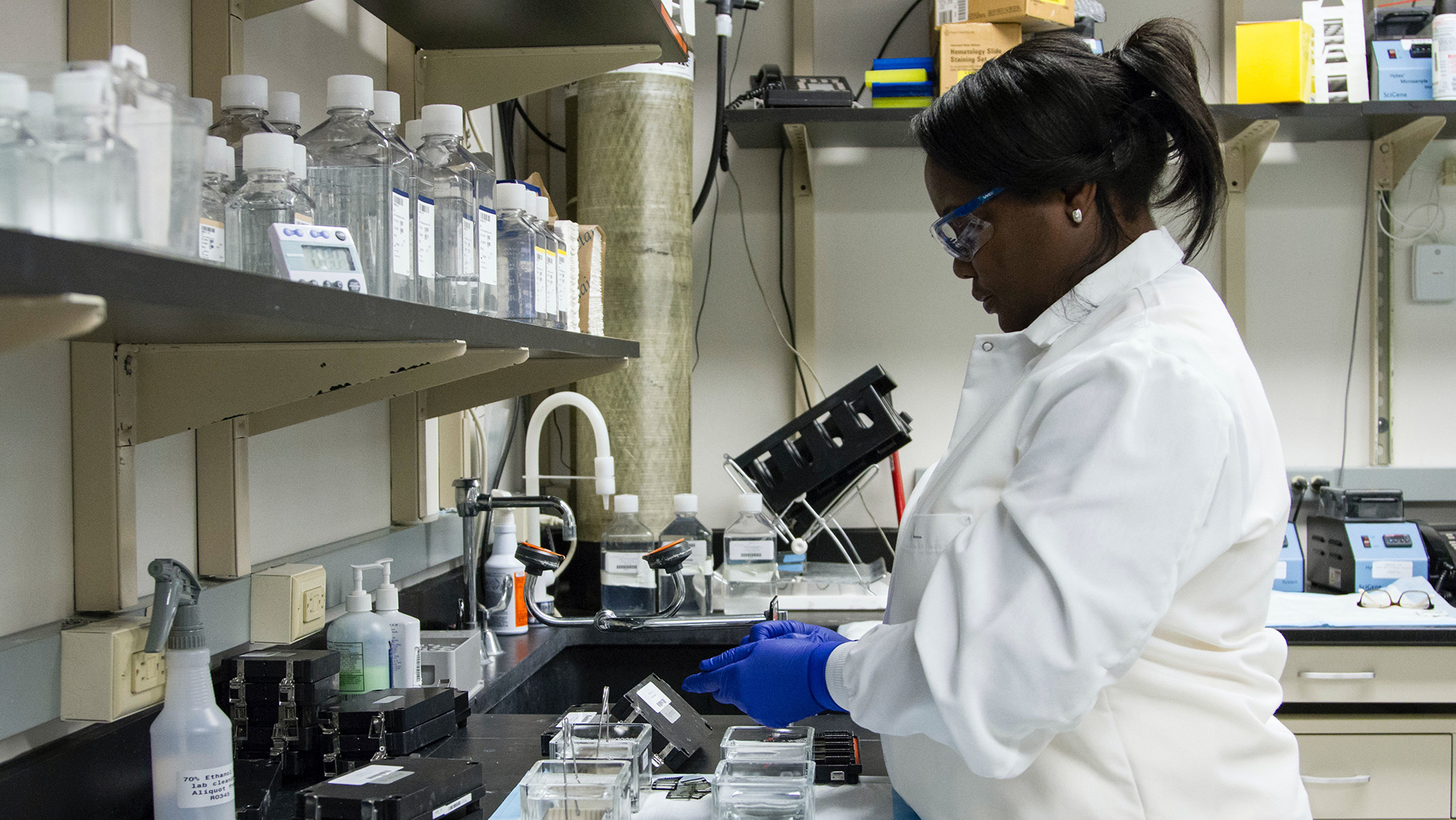Are Science and Religion Compatible?
April 26, 2021

In recent weeks, the results of a Fermilab scientific experiment have caused quite a stir in the scientific community. The experiment, which dealt with some of the fundamental particles of the universe, has the potential to change humanity’s understanding of modern science. As a result, it is also raising questions about what science is, and if it can be wrong.
The experiment that may change physics
The experiment conducted by Fermilab focused on measuring a specific aspect of a little-known particle called the muon. Particles in science refer to the fundamental building blocks of the universe—these particles have no component parts but are in turn the components which everything in the universe is made up of. This includes the staples of high school science education like protons, neutrons and electrons—as well as lesser-known particles, like the elusive Higgs boson particle and the muon. Muons are a type of particle similar to the electron that you may have learnt about in science class—except much heavier. First discovered in 1936, the muon has since become one of many particles that form what is known as the Standard Model.
The Standard Model is the best scientific explanation of many current physics theories; additionally, it serves as a model which categorises all presently known particles. While the standard model does not explain everything and leaves some questions unanswered about aspects of the universe, it continues to be held in high regard and is the basis of a lot of scientific research. An understanding of the standard model allows scientists to predict how particles such as neutrons, quarks or muons will act or react in specific instances and circumstances.
What makes this experiment so interesting is that the results indicate the possibility that muons are being affected by something that exists out of the standard model, something which throws into question aspects of long held scientific knowledge. But how exactly did this happen? To understand this, we first need to understand the concept of “spin”.
All elementary particles, muons included, have a property known as spin. Spin in this scientific context refers to a slight wobble (like the wobbling of a spinning top) which can be seen when the particle is affected by certain forces. Knowing the way that different forces (ranging from the simple, like magnetic fields, to more complex forces like quantum foam) affect particles allows scientists to predict the amount of spin a particle will have. In the case of the Fermilab experiment, it was predicted that the combination of magnetic forces and quantum foam would cause the muon to have a very specific amount of spin.
Fascinatingly however, this experiment conducted at Fermilab showed that these predictions did not match the amount of spin that the muon had. This discrepancy is explainable by three different possibilities:
- The current theories are wrong—a possibility which seems unlikely
- There are new particles which we do not have any knowledge of, and which the theories do not account for that are acting on the particle
- There are new forces acting on the particle which we do not know of and are also not accommodated in the theories at present.
In the words of a producer for the educational YouTube channel Physics Girl,“The newest discovery in physics—we might know less than we thought.”
One thing that is important to note is that while the results of this experiment have been verified and their implications have the potential to open new avenues of research, it has not reached the strict threshold of official statistical significance that particle physics has. It has however, been observed before, in an experiment in 2001, which diminishes the chances of it being a fluke or anomaly.

Photo credit: Daniel Jensen
What does this mean?
Scientists at Fermilab will doubtless work to continue their experiments and pass the threshold of statistical significance to classify their findings as a definite scientific discovery. While they do this, other scientists and physicists may work on refining or re-examining the theories and processes that lead to this incorrect estimate to determine whether it was indeed a new discovery or just a flawed model. Similarly, others will attempt to create new theories and ideas to account for this difference. While there is little to go on in this area, ScienceMag notes that “many will be eager to start”.
No matter what may come from this experiment, the discrepancies serve to highlight some aspects of science and the scientific method that often go ignored. First, science is not perfect or infallible. While some claim that science is the key to discovering an objective truth or reality, or that it will ultimately reveal a theory of everything which can definitively prove or disprove the existence of God, this is not the case. In reality, science is a process utilised by human beings which is constantly evolving and refining its theories and explanations of the world and the natural processes that define it. This muon experiment is merely the latest example of a necessary recalibration.
As the Australian Academy of Science puts it,“’Truth’ today does not guarantee we will not tomorrow find evidence to the contrary. Science is constantly gathering additional evidence concerning known theories . . . just in case.” This does not mean that science is untrustworthy or invalid. It does not negate all the work of physicists over the past five decades. What it does do is highlight the mutability of aspects of science.
Are Science and Religion Compatible?
Despite what some may say, science cannot disprove the existence of God. The idea that faith in a higher power which religions like Islam, Christianity and Judaism all hold as key to their religious beliefs is not opposed to the belief in science. This has not stopped many from perpetuating this conflict between religion and science, with Professor Emeritus of Ecology and Evolution at the University of Chicago, Jerry Coyne going as far as to claim that faith and science are “at war”. Coyne believes that the two cannot be reconciled with each other, and that faith in God or a higher power is actively harmful to the pursuit of science. Many who agree with Coyne will cite incidents like the Catholic Church and the Jesuit’s treatment of Galileo after he proposed the (now proven) theory that the earth revolves around the sun. In contrast to a theist, who believes in a higher power or some form of god, atheism rejects the utility of religious faith and theism preferring to focus on empirical evidence.
Some scientists who ascribe to atheism are less militant however, acknowledging the possibility of an agnostic approach. This was the belief of Stephen Jay Gould. Gould was a paleontologist who was known for his writings on evolutionary biology and Darwin’s theory of evolution, and advocated that science and religion should remain separate, each presiding over different fields. When asked about his position on a higher power for Skeptic magazine, he stated that while he personally did not believe in the existence of God “basically, Huxley was right when he said that agnosticism is the only honourable position because we really cannot know”.

Photo credit: National Cancer Institute
In contrast, many religious groups or people ascribe to the idea known as “accommodationism”, which holds that the different fields can answer questions which the other cannot. Michael Ruse, Professor of Philosophy at Florida State University, notes that science works to define and answer specific problems and questions. The issues that it does not tackle however, are those which religion can focus on. Similarly, American physicist and geneticist Francis Collins is often cited as an example of a scientist who believes in the compatibility of religion and science.
To bring this idea back to the recent discovery by Fermilab, science has revealed that physics is more complicated than we imagined—with unknown forces or particles potentially influencing some of the building blocks of the universe. While some may claim these unknown forces are God or evidence of His existence, it is likely that there will ultimately be a scientific explanation for this—one which does not definitively prove or disprove the existence of God. Science can, and should, be used as an important tool in helping us understand aspects of the natural world and human life. What science may struggle to explain is the ultimate root cause behind these systems and particles which are the focus of much scientific inquiry. Thankfully, religion may have an answer.

Photo credit: John Towner
The ‘God of the gaps’
Describing the origins of the universe John, one of the first Christians and a disciple of Jesus, wrote “Through him all things were made; without him nothing was made that has been made” (John 1:3, NIV). Similarly, when describing God, the apostle Paul wrote, “He is before all things, and in him all things hold together” (Colossians 1:17, NIV). According to the Bible, God is the ultimate reason behind everything. This does not negate science, but it does highlight its limitations.
The Bible contains the account of a man named Job who, in the face of immense pain and suffering, questions God about many fundamental issues such as the nature of pain and suffering, and what his role in the cosmology of the universe is. God responds rhetorically, asking Job a multitude of questions which highlight His status as the Creator and ultimate Sustainer of the universe. “Do you know the laws of the heavens? Can you set up God’s dominion over the earth?” (Job 38:33, NIV).
Throughout His conversation with Job, God highlights how far beyond humanity He is. God’s power and understanding are not things that humans, imperfect as we are, can comprehend, which highlights the flipside of the relationship between science and faith. Just as we acknowledge that science cannot answer everything, so too must we acknowledge that there are issues of faith which even the most well-read of the theologians or religious leaders cannot definitively answer.
As the Bible states, “’For my thoughts are not your thoughts, neither are your ways my ways,’ declares the Lord. ‘As the heavens are higher than the earth, so are my ways higher than your ways and my thoughts than your thoughts.’” Like science, there will come a time when we cannot prove or answer our specific beliefs and must rely on the evidence given to us in the Bible. Just like scientists have words to describe their theories and experiments, we also have one to describe this idea. Faith.
Ryan Stanton is a graduate journalist who lives in Sydney, Australia. He is currently pursuing his PhD.









